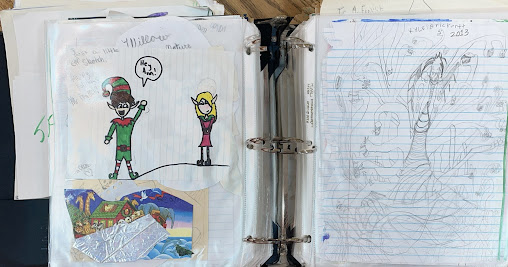Designing your studio with the child in mind.
For as long as I can remember I have always been a tinkerer. As a young child fiddling with broken toys, messing with a carburetor or rearranging my room. I loved playing with ideas, changing something simple and seeing what happened. I suppose it’s this curiosity that drives me. It’s one of the reasons I’ve thoroughly enjoyed teaching for the last 25 years, 18 of which I've been Teaching for Artistic Behavior (TAB). Being a TAB teacher, I believe in the three guiding statements 1) that students are artists 2) and the room is their studio and 3) What do artists do?. For the purpose of this article, I would like to focus on the second statement: The room is their studio.
There’s been a lot of discussion about room design over the last couple of years and it’s mostly been focused on maker-spaces: Big beautiful rooms with brightly colored, movable furniture that costs a fortune. But what about our art rooms, our studios? This idea came to me during a discussion with another art teacher as we discussed the democratization of the art room.
“The Placement of objects in space is not arbitrary and rooms represent in physical form the spirit and souls of places and institutions” Herb Kohl - The Open Classroom
When a child walks into any classroom, they subliminally orient themselves by how the room is arranged. Certain kids will sit next to the teacher or the teacher's desk, others may choose to sit in the front of the room by the whiteboard while others head to the back of the room with their friends. A TAB classroom is designed to be a three-dimension unit/lesson plan; where every surface is a potential spot to learn. What would happen if we intentionally designed the room to help children by removing obstacles and made things more accessible?
Researchers say that how a room is designed can have a 25% impact (positive or negative) on a students progress over an academic year. That's a lot of impact!
It's obvious that classrooms should be inviting, environments that make students feel welcome and want to be there. We should be spending a lot of time thinking about how we design our classrooms and be sure that they not only support the curriculum but engage the student.
Our studio is not only a designated space to create but also a place to collaborate, learn, dream, socialize, research and play. But like most art rooms, it’s used by all the students. Therefore It should be a flexible area where children feel comfortable and welcome when they enter. It should facilitate easy and free access to all materials and tools needed to create. It needs to be arranged in a way to engage and inspire students to work more productively and creatively. To support the diversity of creative children in elementary school we need to think about how they come into the studio, how are the tables arranged, how the students move from one area to the next. Are there places to work in groups or individually? On large surfaces or vertical services.
Here are a few suggestions for making the room more accessible to younger children.
- Watch how artists move around the room and keep areas clear. If possible move or remove your desk to a less prominent location in your room.
- Keep all available materials within reach of artists who use them. Other items may be placed in a higher location for older/taller artists.
- Label tools and materials with words and pictures so even my younger artists know what is available and how to use them?
- Make all signage and menus easy to read with minimalism in mind: Keep it brief and to the point. And make sure it’s at eye level.
- Make signage eye-catching and colorful?
- Keep the decorating to a minimum. It might look good to you but may be distracting to younger children.
- Keep the focus on what the children will be doing and how to spark curiosity in the room, a place where the students are free to discover something new.
- Consider removing or minimizing your desk area to free up space for children to use.
The year is almost halfway finished and I'm still playing with these concepts.





Comments
Post a Comment